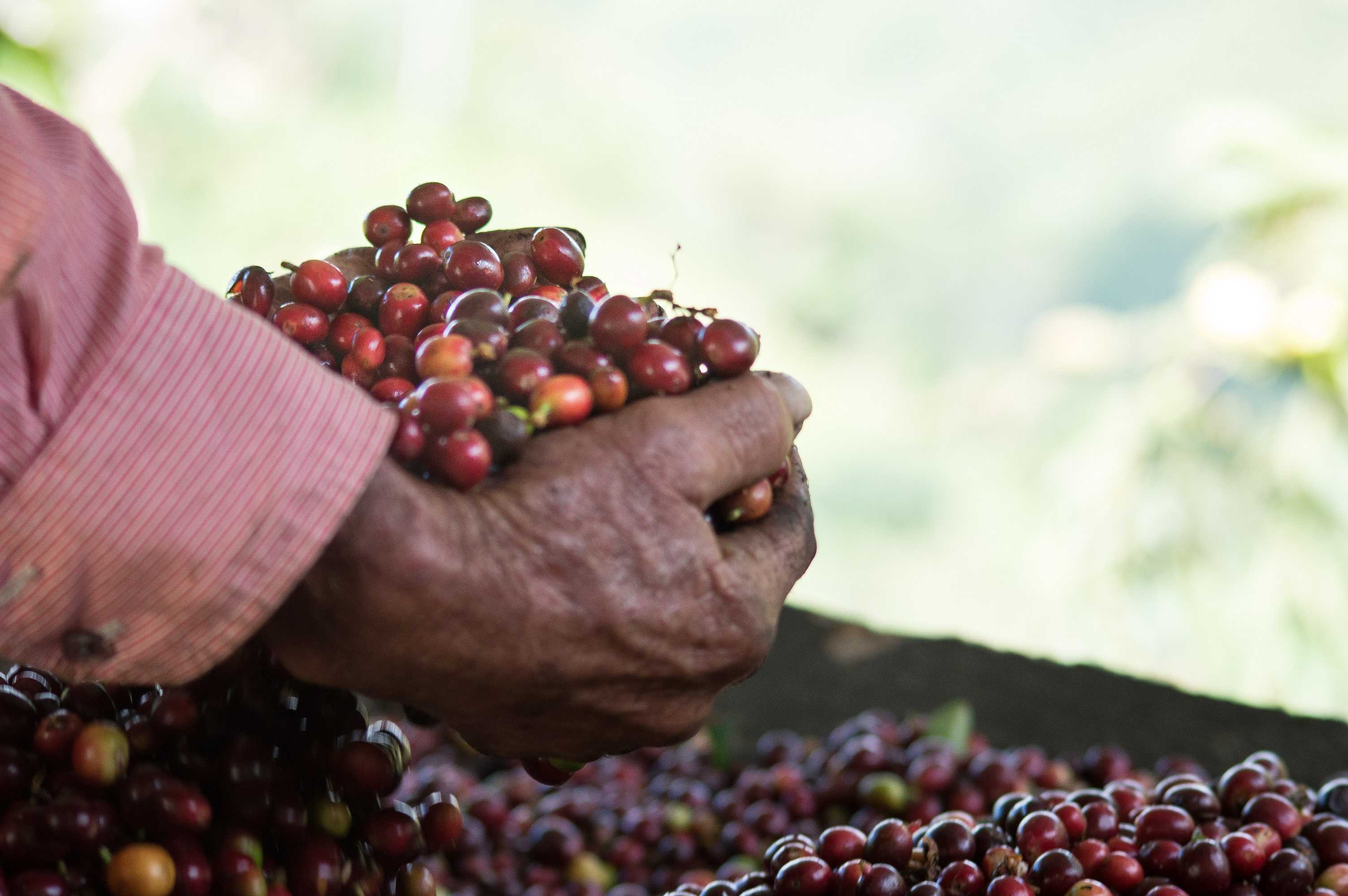MANIZALES, Colombia – Alfredo Nuno’s morning ritual has been the same for the past 18 years: Wake up, grind coffee beans, pour the grounds into a coffee press, let them steep in water, take a sip – and feel the past and present rise up and meet. It’s a humbling moment, he said on a recent morning.
“It’s the end of a very long road where you have many hands, many lives and many struggles that were involved to have that cup,” he said.
Nuno, who leads the Starbucks Farmer Support Center in Manizales, Colombia, one of 12 Colombian departments (similar to U.S. states) that encompass 90,000 farmers in the Starbucks supply chain, knows the obstacles farmers face in the ancient art of coffee growing. He has seen their struggles, and he knows their stories.
He knows that many have lived in areas of conflict where more than 200,000 have died and 5 million have been displaced. For some, the main way to earn a livelihood was to grow coca leaves, used in making cocaine. If the farmers wanted to stop, sometimes their lives would be in danger.
Colombia ended the more than 50 years of violence and insurgency last year when its main rebel group, the Revolutionary Armed Forces of Colombia (FARC), inked a peace agreement.
Since the agreement was reached, farmers now have more freedom to make the choice to turn from coca leaves to coffee growing. Nuno and Starbucks are committed to helping them become successful.
On Monday, Starbucks announced new plans for supporting the next generation of coffee growers. An expanded partnership with the United States Agency for International Development (USAID) is aimed at providing 1,000 farmers in post-conflict zones with training in agriculture and climate resiliency programs and providing them access to technology to help them run their farms. A $4 million farmer loan initiative in partnership with the Inter-American Developmental Bank (IDB) will support 2,000 mainly women farmers in Colombia.
“To say, ‘We are going to quit growing coca leaves and produce coffee’ – that’s huge,” Nuno said. “They will gain in their own tranquility and self-esteem and won’t be bound to blackmail and pressure.”
On Monday at the Plaza Mayor Convention Center in Medellin, Colombia, several farmers – including former coca leaf growers who are now cultivating coffee and a female coffee farmer — shared their stories. Representatives from Starbucks, USAID, the Colombian Coffee Federation and IDB also spoke.
In 2009, Jose, a coffee farmer in the village of Cachumbal, decided to leave behind a life marked by the fear and anxiety that had infused his days as a grower of coca leaves. He had met a woman who also grew coca, and they fell in love. They decided to switch to cultivating coffee in hopes of a more secure future, one in which they would feel confident building a family.
To avoid potential retribution from rebel groups, to whom he would deliver the coca leaves, Jose (his last name is not being used for safety reasons) and his wife moved to another region in Colombia to begin anew.
They now have two young girls. Jose receives assistance from the Starbucks Farmer Support Center, which has helped him manage the cost of running his 10-acre farm and taught him to maintain a healthy crop and grow it sustainably.
At first, he earned less from growing coffee than from coca leaves, but he says his coffee now brings in similar income to what he used to make from selling coca. “Follow the coffee path,” Jose, 35, said at Monday’s event. “I have found that coffee-growing is a more peaceful lifestyle.”
Starbucks is also kicking off a partnership in Colombia with the IDB to grant loans to benefit 2,000 small-scale growers who grow coffee and are part of the primarily women-run co-op Cooperativa de Caficultores de Andes (Cooperandes). The loans will help them develop their coffee farms to enhance quality and coffee yields. Since many don’t have land rights, they don’t have the collateral to get a traditional loan.
Alejandra Cadavid, a female farmer from the Antioquia region, comes from a family of coffee farmers. Her parents cultivated coffee, but both her mother and father died when Cadavid was an infant. Raised by her grandparents, Cadavid took over the farm from them when she was 20
“I had to take care of everything,” she said. “It was hard for me because I’m very young and because I’m a woman.” Support from Cooperandes and from the IDB have helped Cadavid find success in the fields.
“We’re enabling women to make their own decisions for their future,” Nuno said. Some of the women who are part of the co-operative are widows of men who died in conflict, as did Cadavid’s father.
For decades, in parts of Colombia deeply affected by the conflict, coffee farming just halted, frozen in time. Now, “there are some areas where you can see coffee growing was set back 50 years,” Nuno said. “They are using those old techniques.”
At the Starbucks Farmer Support Center in Colombia, which opened in 2012, coffee growers can have their soil tested and get advice from agronomists about the right fertilizer for their land, learn about disease-resistant trees, current best practices and more, regardless of whether they sell to Starbucks. Starbucks has farmer support centers in nine coffee-growing regions around the world, devoted to sharing information with farmers. The company’s goal is to train 200,000 coffee farmers in best practices by 2020. The first support center launched in 2004 in Costa Rica.
“We do it because it’s the right thing to do,” said Nuno. “Our job is to help them produce to the capacity of their plot of land.”
Carolina Castaneda, director of the Colombian Coffee Growers Federation’s European office, credited Starbucks with helping Colombia “spread the coffee consumption message globally.”
“We are strategic partners on sustainability issues and we hope we can continue working together,” said Castaneda.
Kelly Goodejohn, Starbucks ethical sourcing director, said supporting farmers helps meet a real need for more high-quality coffee. The company is one of the largest purchasers in the world of Colombian arabica coffee, considered the top quality – but the need is growing.
Climate change, market fluctuations and pests that cause disease in coffee trees make farmers vulnerable – and, increasingly, make coffee farming less appealing to the next generation, said Goodejohn. Globally, the average age of a coffee farmer is 57, she noted.
“(Starbucks is) growing and so we need more high-quality coffee,” she said. With the support center and the programs to offer loans to farmers, “we have a wrap-around approach that helps coffee farmers see a future and a prosperity that makes the next generation willing to go into farming.”
Speaking from the support center on a recent morning, Nuno’s thoughts return to those he works with every day.
“We are touching lives at all ends,” he said, “from people at the front of the counter ordering a latte to the coffee grower.”
Linda Dahlstrom and Bonnie Rochman

















